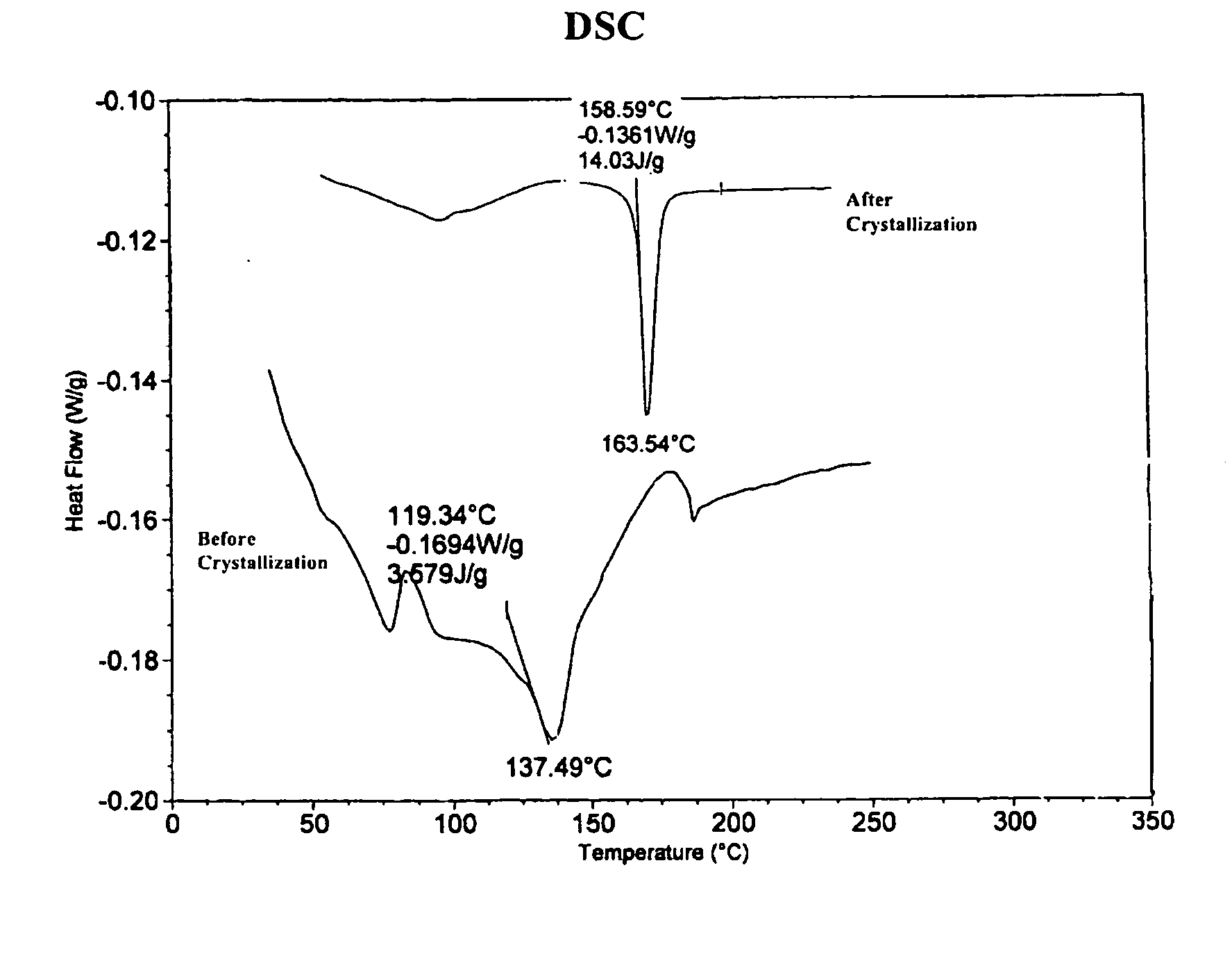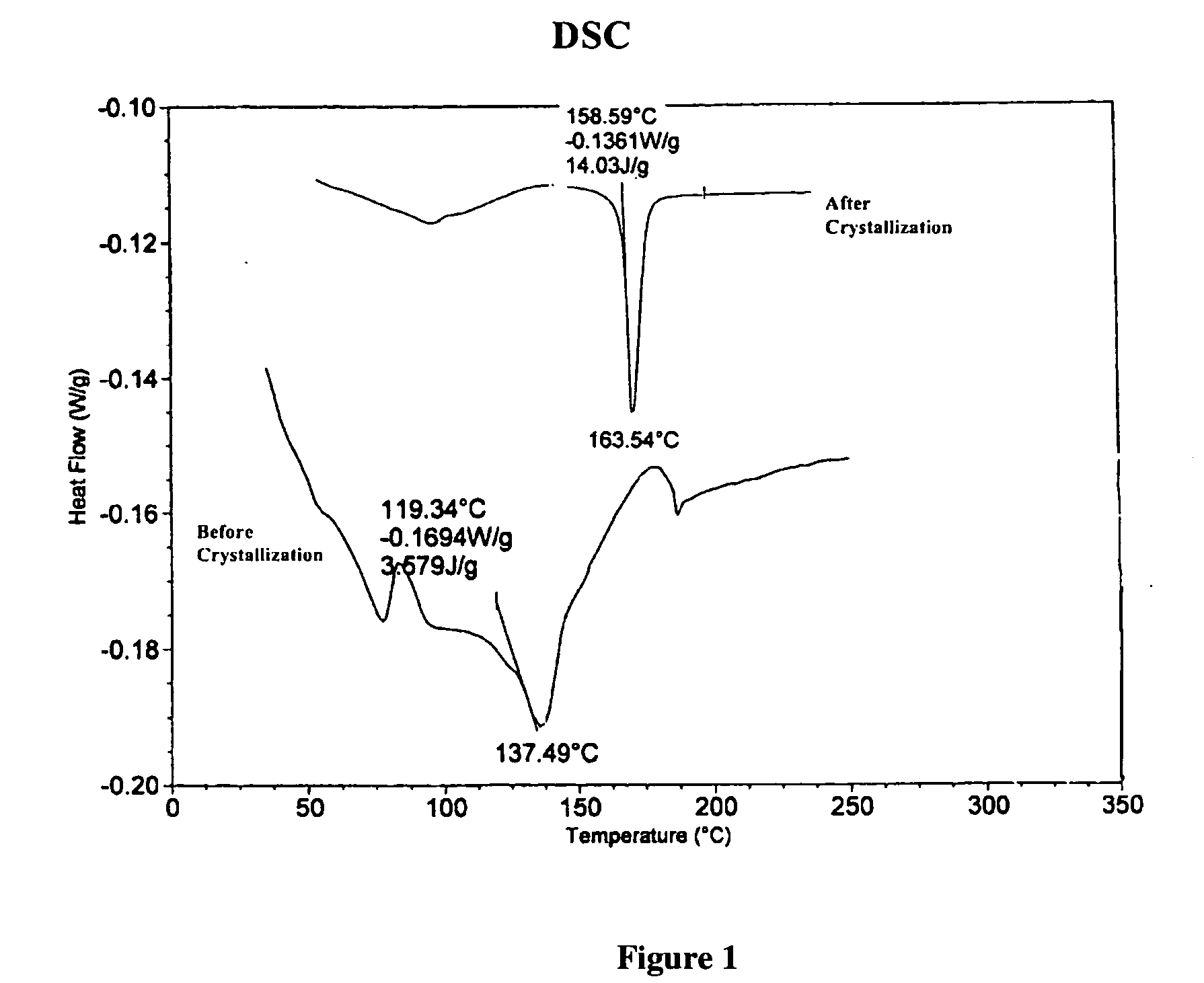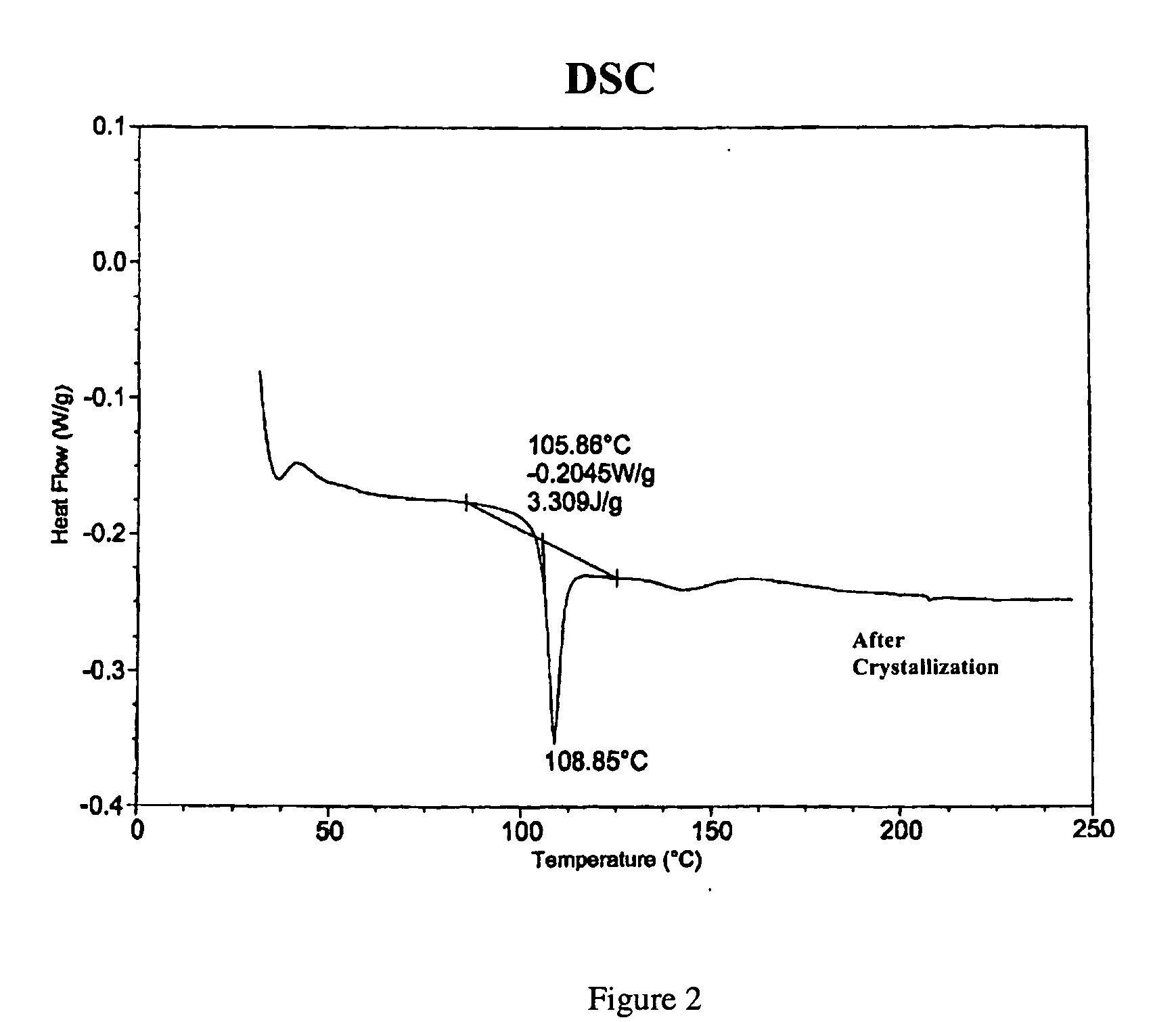Crystalline polyphosphonates and methods related thereto
a technology of crystalline polyphosphonates and polyphosphonates, applied in the field of crystalline polyphosphonates, can solve the problems of low molecular weight polyphosphonates that exhibited poor toughness, insufficient general acceptance in the marketplace, and sacrifice of processability, etc., and achieves excellent combination of processability and toughness, high molecular weight, and high molecular weight
- Summary
- Abstract
- Description
- Claims
- Application Information
AI Technical Summary
Benefits of technology
Problems solved by technology
Method used
Image
Examples
example 1
Solvent Induced Crystallization of an Amorphous Polyphosphonate
[0016] A 50 mL round bottom flask equipped with a magnetic stirbar was placed a branched polyphosphonate (˜2 g). The polyphosphonate was prepared by the transesterification reaction of methyldiphenoxy-phosphine oxide, 4,4′-dihydroxydiphenylphenyl tetraphenylphosphonium phenolate and 1,1,1-tris(4-hydroxyphenyl)ethane according to the U.S. patent application Ser. No. 10 / 374,829, filed Feb. 24, 2003 and is incorporated by reference. The branched polyphosphonate exhibited a relative viscosity of 1.13 and a Tg of ˜137° C. and no melting transition by DSC. Methylene chloride (30 mL) was added to the flask and the polyphosphonate dissolved over about 2 hours with stirring. This solution was subsequently poured into a beaker containing methanol (˜150 mL). A precipitate formed immediately, additional methanol ˜(100 mL) was added and the mixture was allowed to stand for ˜1 hour. The off-white solid was isolated by filtration, was...
example 2
Solvent Induced Crystallization of an Amorphous Polyphosphonate
[0017] A 500 mL round bottom flask equipped with a magnetic stirbar was placed a branched polyphosphonate (5.2 g). The polyphosphonate was prepared by the transesterification reaction of methyldiphenoxy-phosphine oxide, 4,4′-dihydroxydiphenyl, tetraphenylphosphonium phenolate and 1,1,1-tris(4-hydroxyphenyl)ethane according to the U.S. patent application Ser. No. 10 / 374,829, filed Feb. 24, 2003 and is incorporated by reference. The branched polyphosphonate exhibited a relative viscosity of 1.13 and a Tg of ˜137° C. and no melting transition by DSC. Methylene chloride (100 mL) was added to the flask and the polyphosphonate dissolved over about 0.5 hours with stirring. This solution was subsequently placed on a rotary evaporator and the solvent was removed. Warm acetone (˜25 mL) was added to the remaining white solid to form a solution. The solution was scratched with a spatula and white crystals immediately formed. The wh...
example 3
Solvent Induced Crystallization of an Amorphous Polyphosphonate
[0019] A 500 mL round bottom flask equipped with a magnetic stirbar was placed a branched polyphosphonate (5.0 g). The polyphosphonate was prepared by the transesterification reaction of methyldiphenoxy phosphine oxide, 2,2-bis(4-hydroxyphenyl)propane (bisphenol A), tetraphenylphosphonium phenolate and 1,1,1-tris(4-hydroxyphenyl)ethane according to the U.S. patent application Ser. No. 10 / 374,829, filed Feb. 24, 2003 and is incorporated by reference. The branched polyphosphonate exhibited a relative viscosity of 1.12 and a Tg of 104° C. and no melting transition by DSC. Methylene chloride (200 mL) was added to the flask and the polyphosphonate dissolved over about 0.5 hours with stirring. The solution volume was reduced to ˜30 mL by evaporation and was subsequently poured into a crystallizing dish and heated to about 80° C. for several hours in an oven. The material was further heated to about 80° C. in a vacuum oven. Th...
PUM
| Property | Measurement | Unit |
|---|---|---|
| dispersities | aaaaa | aaaaa |
| Tg | aaaaa | aaaaa |
| Tg | aaaaa | aaaaa |
Abstract
Description
Claims
Application Information
 Login to View More
Login to View More - R&D
- Intellectual Property
- Life Sciences
- Materials
- Tech Scout
- Unparalleled Data Quality
- Higher Quality Content
- 60% Fewer Hallucinations
Browse by: Latest US Patents, China's latest patents, Technical Efficacy Thesaurus, Application Domain, Technology Topic, Popular Technical Reports.
© 2025 PatSnap. All rights reserved.Legal|Privacy policy|Modern Slavery Act Transparency Statement|Sitemap|About US| Contact US: help@patsnap.com



